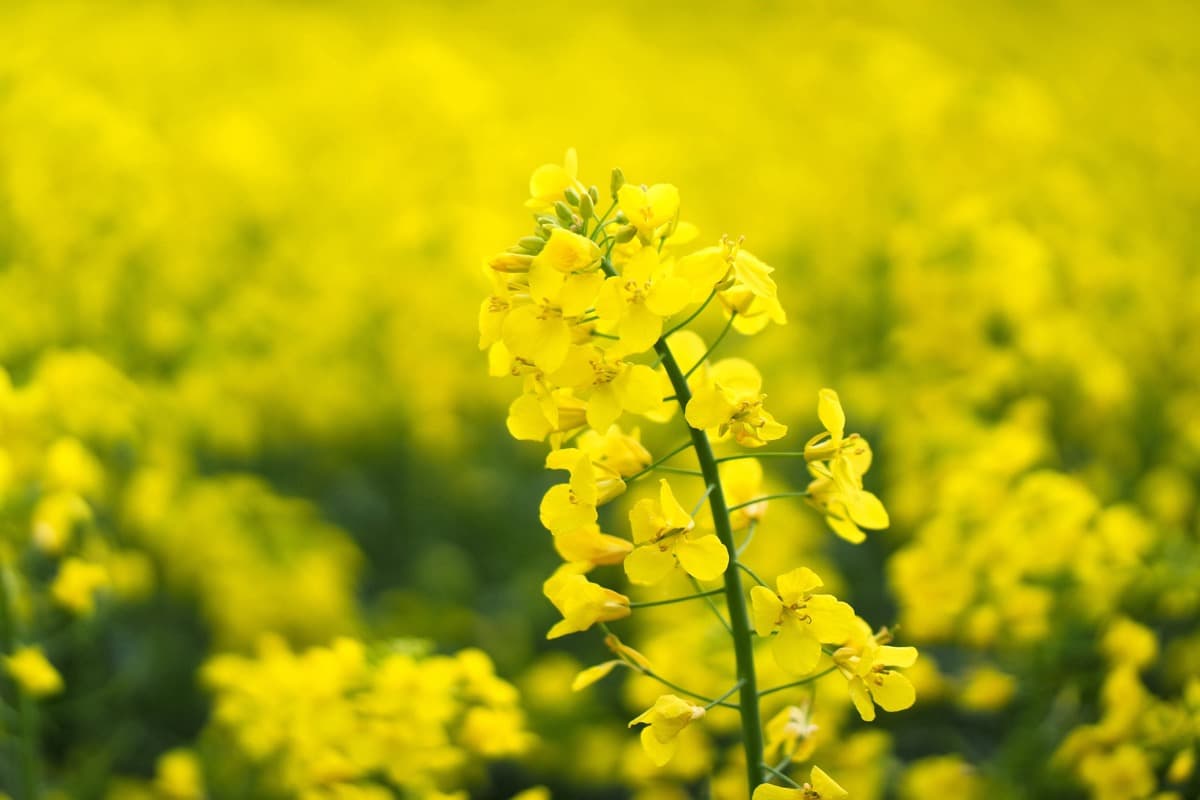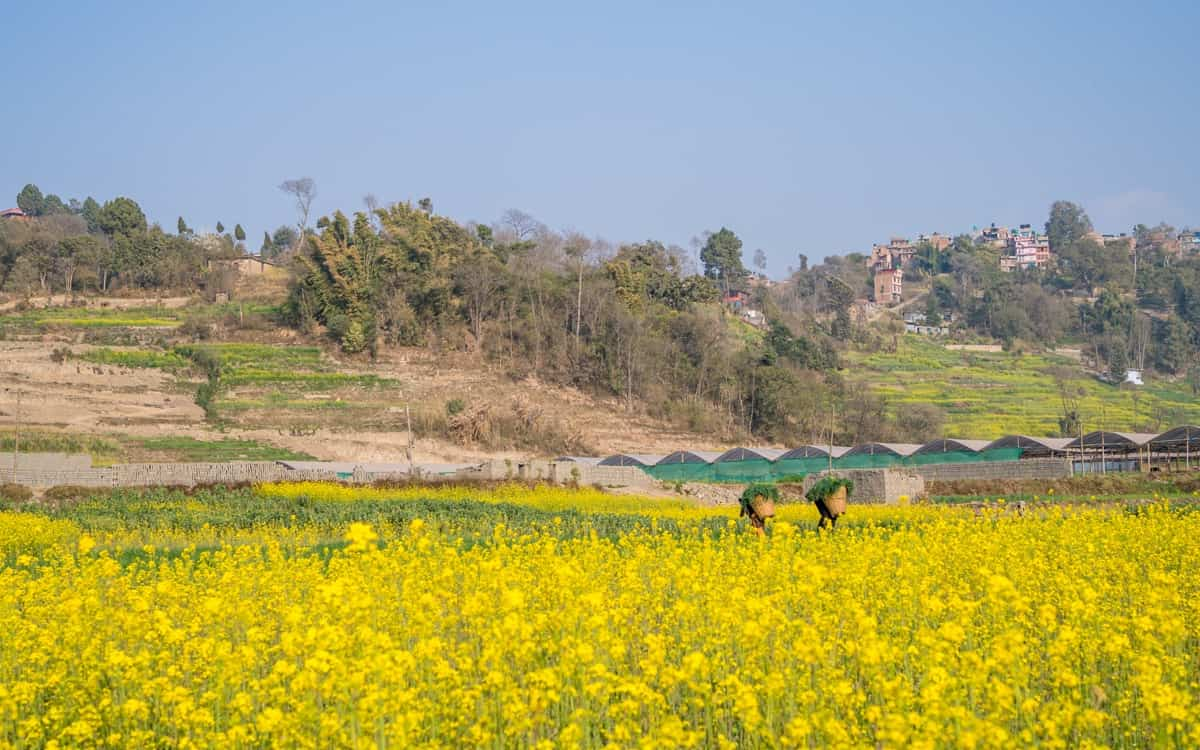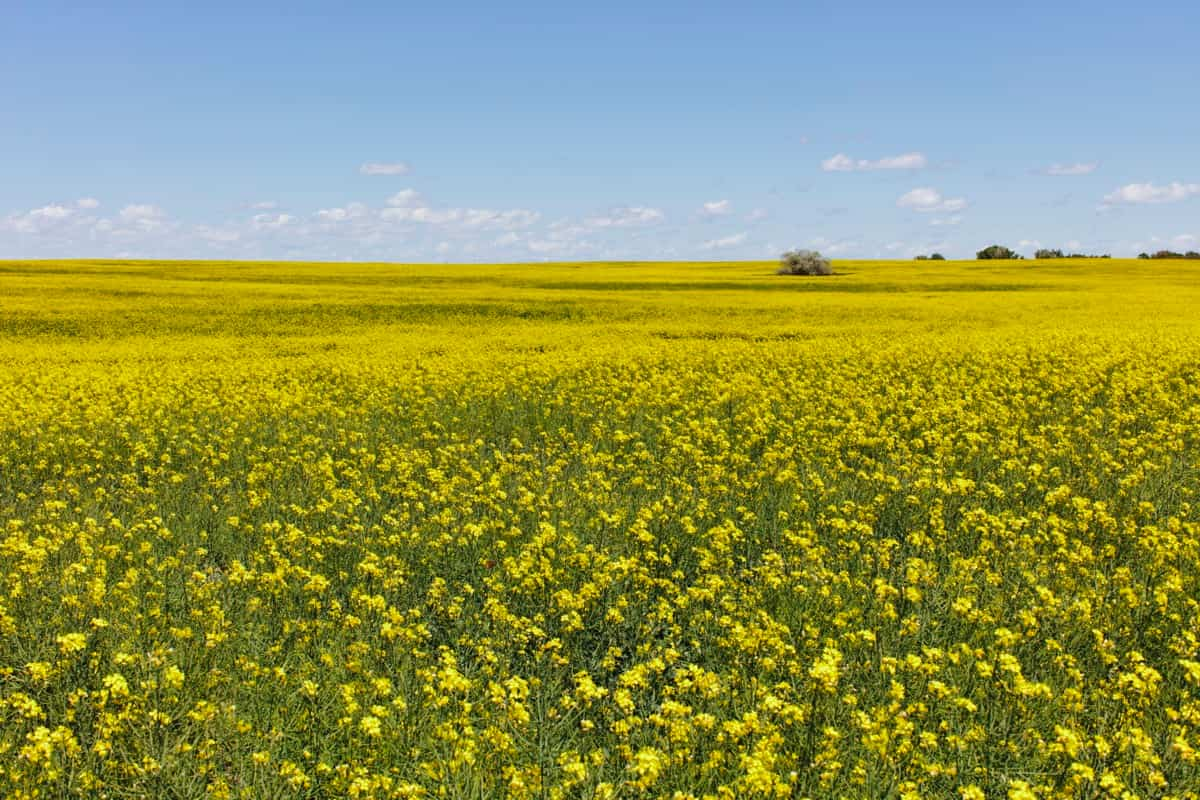Discover the incredible potential of mustard-based cropping systems to enhance both yield and income for farmers. In a groundbreaking case study conducted in a rural region, the implementation of innovative agricultural practices resulted in a remarkable doubling of yield and income.

By integrating mustard as a key crop, farmers experienced substantial improvements in soil health, pest management, and overall productivity. This blog post deals with the details of this transformative study, highlighting the specific techniques and strategies employed. Explore how this sustainable and profitable approach can revolutionize farming practices, empowering farmers to achieve higher yields and increased financial stability.
Yield and Income of Mustard-Based Cropping System
What is a Mustard-Based Cropping System?
A mustard-based cropping system is a system of growing mustard in rotation with other crops. This system can help to improve soil fertility, reduce the effect of pests and diseases, and increase crop yields.
- Mustard is a crop, which can help improve soil fertility by converting atmospheric nitrogen, and cardon into a form that plants can use. This can benefit the other crops in the rotation, as they can access more nitrogen.
- Additionally, mustard is a rich source of biomass, which can be used to strengthen the soil and lessen erosion. It is possible to leave the leftovers from mustard crops on the soil to act as a mulch and moisten the soil.
- A crop resistant to most pests and illnesses is mustard. It can therefore lessen the demand for pesticides, which benefits the environment and human health.
- Systems for growing mustard can also aid in boosting agricultural yields. A short growing season is required to cultivate mustard, a short-season crop. The land that is used for agriculture may rise as a result.
In case you missed it: Mustard Cake Fertilizer Uses in the Garden: Step-By-Step Process, Plant Benefits, and Application Method

Mustard Crop and Its Characteristics
- Mustard plants belong to the Brassicaceae family, specifically the genera Brassica and Sinapis.
- Mustard seeds are crushed or ground and mixed with vinegar, water, or other liquids to create prepared mustard, a popular yellow condiment.
- Mustard greens are edible leaves, while mustard oil is extracted from crushed mustard seeds.
- Mustard has a long history of domestication, dating back around 6,000 years.
- It is widely used in various cuisines worldwide, including India, Bangladesh, the Mediterranean, Europe, Asia, the Americas, and Africa.
- Mustard is the second most significant winter oilseed crop in India.
- It is primarily grown in the northern plains and some parts of the eastern region.
- Other “Rapeseed & Mustard” crops include Toria, Yellow Sarson, Brown Sarson, Gobhi Sarson or Canola, and Black Mustard or Banarasi Rai.
- Mustard seeds have an oil content of up to 45%, and the de-oiled cake is used as animal feed.
- Mustard cultivation has ancient roots, with evidence of its presence in the Indus Valley and domestication in West Asia and Europe.
- Records from 3000 BC mention the use of mustard in Sumerian and Sanskrit literature.
- Recent genomic research suggests mustard may have been domesticated 6,000 years ago in Central Asia.
Mustard Climate and Soil Requirements
- Mustard thrives in subtropical climates, preferring a dry and chilly environment.
- It is typically grown during the Rabi season, with a temperature range of 10 °C to 25 °C.
- Mustard requires an annual rainfall of 625 to 1000 mm, but frost and high humidity during flowering can be detrimental.
- Suitable soils for mustard include alluvial loam, sandy, and heavy clay soil, with medium to deep and well-drained characteristics. The pH range should be 6.0 to 7.5.
Mustard Farming Techniques
- Mustard is usually sown between September and October.
- Whether it’s a pure or mixed crop, broadcasting or drilling methods are used for seed sowing.
- For better productivity, mustard can be intercropped with lentils, gram, or wheat.
- Germination occurs at approximately 28 °C, and the seeds should be sown up to a maximum depth of 6 cm.
Mustard Physiology and Development
- Mustard plants typically reach a height of 45 to 150 cm.
- The roots are long and tapered, and the stems vary depending on the mustard variety.
- Mustard flowers have four petals ranging from creamy white to vivid yellow.
- Mustard fruits, called siliquas, are pods with brown or yellow seeds that are small and rounded.
In case you missed it: Mustard Cake Fertilizer Uses in the Garden: Step-By-Step Process, Plant Benefits, and Application Method

5 Best Tips Related to Mustard-Based Cropping System
- Sow mustard seeds at the optimum temperature of 15-20 degrees Celsius. Mustard seeds germinate best at a temperature of 15-20 degrees Celsius. But the plants will be weak and susceptible to pests and diseases.
- Test the soil and apply the required amount of fertilizer. Mustard is a heavy feeder and requires a lot of nutrients. Before fertilizing, check soil nutrients. Fertilizer amounts depend on soil type, mustard variety, and yield.
- Sow the seeds of profitable varieties such as Pusa Vijay, Pusa-29, Pusa-30, and Pusa-31. There are many different varieties of mustard available. Some varieties are more profitable than others.
- Treat the seeds with Captan 2.5 grams per kg before sowing. Captan is a fungicide that can help to protect the seeds from fungal diseases. Treating the seeds with Captan can help to increase the germination rate and the yield of the crop.
- Sow the seeds in rows for healthier yields. Sowing the seeds in rows will help 12-15cm plants have enough space to grow and develop.
Role of Mustard in Crop Rotation and its Benefits
- Controls weeds: Mustard can help to control weeds by suppressing their growth. This is because mustard has a dense canopy that shades out weeds and competes with them for water and nutrients.
- Breaks pest and disease cycles: Mustard can help to break pest and disease cycles by providing a non-host crop for pests and diseases. This help to reduce the incidence of pests and diseases in subsequent crops.
- Provides a source of forage for livestock: Mustard is a high-quality forage crop that can be used to feed livestock. This help to reduce the cost of feed for farmers and improve the nutritional value of the livestock’s diet.
- Increases crop yields: Mustard can help to increase crop yields by improving soil fertility, controlling weeds, and breaking pest and disease cycles. This can lead to increased profits for farmers.
Doubling Yield and Income of Rapeseed-Mustard-Based Cropping Systems
Importance of Nutrient Use Efficiency
- With the growing demand for edible oil, improving nutrient use efficiency is crucial for increasing crop productivity and reducing nutrient waste.
- Nutrient use efficiency refers to the system’s ability to convert inputs into desired outputs while minimizing waste.
- Enhancing nutrient use efficiency can reduce fertilizer costs, minimize nutrient losses, and boost crop productivity.
Potential to Increase Mustard Productivity
- The current national average yield of mustard is 1145 kg/ha, but there is potential to increase it to 2000.0-2500.0 kg/ha.
- Achieving this requires enhancing input use efficiency and optimizing fertilizer nutrient sources.
Micronutrient Importance for Mustard
- Mustard is particularly sensitive to micronutrient deficiencies, especially zinc and boron.
- Different ideotypes of mustard show varying responses to applied micronutrients.
Understanding Bio-physiological Mechanisms
Detailed knowledge of the bio-physiological mechanisms for adapting to nutrient stress is crucial for enhancing nutrient use efficiency at the plant level.
In case you missed it: Soil Solarization for Vegetables and High-Value Crops: A Non-Chemical Method for Weed Control

Utilizing Organic Sources and Synergistic Effects
- Exploring the potential of organic manures, composts, crop residues, agricultural wastes, bio-fertilizers, and their synergistic effects with chemical fertilizers is essential.
- This approach helps ensure a balanced nutrient supply, increase nutrient use efficiency, improve soil health, and promote environmental safety.
Integrated Nutrient Management (INM) Approach
- INM involves using organic and inorganic nutrient sources in a balanced manner.
- INM improves nutrient uptake by mustard, leading to enhanced use efficiency of various nutrients from the soil.
Factors Affecting Yield and Income in Mustard-Based Cropping Systems
Soil Fertility
- Adequate soil fertility is crucial for optimal mustard crop yield and income.
- Factors such as organic matter content, nutrient availability, pH level, and soil moisture play a significant role.
- Proper soil testing and analysis can help identify nutrient deficiencies and guide appropriate fertilizer application.
Seed Quality and Variety Selection
- High-quality seeds and suitable mustard varieties are vital for maximizing yield and income.
- Selecting varieties that are well-adapted to local growing conditions, disease-resistant, and high-yielding is essential.
- Using certified seeds ensures genetic purity and better crop performance.
Crop Management Practices
- Timely and proper crop management practices significantly impact yield and income.
- This includes appropriate sowing time, seed rate, irrigation scheduling, weed control, pest and disease management, and nutrient application.
- Adopting integrated pest management (IPM) practices and following recommended agronomic practices improve crop health and productivity.
Climate and Weather Conditions
- Mustard crop yield is influenced by climatic factors such as temperature, rainfall, and sunlight.
- The optimal temperature range during the crop’s growth stages is crucial for achieving higher yields.
- Adverse weather conditions like drought, excessive rainfall, or frost can negatively impact yield and income.
In case you missed it: A Guide to Understand Importance of Drones in Agriculture/Farming: Advantages, Applications, and Different Types

Post-Harvest Handling and Storage
- Proper post-harvest handling and storage practices help maintain the quality of harvested mustard seeds.
- Timely harvesting, drying, cleaning, and storage in suitable conditions prevent spoilage, insect damage, and seed deterioration.
Market Demand and Price
- Market demand and price fluctuations directly affect the income from mustard crops.
- Farmers should consider market trends, demand-supply dynamics, and price forecasts while planning their cultivation and marketing strategies.
Best Cropping System for Doubling Yield and Income of Mustard
Crop Rotation
- Including leguminous crops like lentils, chickpeas, or peas in the rotation cycle can benefit mustard cultivation.
- Legumes fix atmospheric nitrogen, improving soil fertility and reducing the need for nitrogen fertilizers in subsequent mustard crops.
- Crop rotation also helps break pest and disease cycles, reducing the risk of yield losses.
Intercropping
- Intercropping mustard with compatible crops can optimize land use and enhance yield and income.
- Popular intercropping options include growing mustard with wheat, gram, or barley.
- The crops have different growth patterns and nutrient requirements, minimizing competition and maximizing resource utilization.
Relay Cropping
- Relay cropping involves planting a second crop in the same field while the initial crop grows.
- Mustard can be relay cropped with short-duration crops like mung beans, black gram, or sesame.
- This maximizes land productivity and extends the cropping period, resulting in higher yields and income.
Precision Farming Techniques
- Implementing precision farming techniques, such as site-specific nutrient management and precision irrigation, can significantly improve mustard yields.
- These techniques involve analyzing soil variability and applying inputs (fertilizers, water) precisely where and when needed.
- Precision farming helps optimize resource use, reduce input wastage, and enhance crop productivity.
Integrated Farming Systems
- Integrating mustard cultivation with other agricultural activities, such as livestock rearing or beekeeping, can diversify income streams and improve profitability.
- For example, utilizing mustard straw as fodder for livestock or integrating bee colonies for honey production can generate additional income.
Benefits of Relay Cropping Berseem in Mustard-Based Cropping System
Relay cropping berseem (Trifolium alexandrinum) in a mustard-based cropping system can bring several benefits. Relay farming maximizes land use by simultaneously cultivating two crops. Farmers can maximize land production by spreading berseem between mustard rows.
- Enhanced nutrient cycling: Berseem, a leguminous crop, fixes atmospheric nitrogen with nitrogen-fixing bacteria. Berseem nitrogen enriches the soil for mustard crops. This minimizes synthetic nitrogen fertilizer use, saving money and improving the crop nutrient cycle.
- Suppresses weeds: Relay cropping mustard berseem suppresses weeds. Berseem’s dense canopy reduces weed development by competing for light, water, and nutrients. This reduces mustard crop weeds and resource competition, increasing production potential.
- Moisture conservation: Berseem cover crop reduces evaporation and improves water infiltration. The berseem canopy prevents soil erosion and retains moisture for the mustard crop. This helps in water-stressed areas.
- Diversified income: Berseem can be a relay crop for farmers. Berseem is high-nutrition livestock feed. Besides mustard production, farmers can sell berseem or feed it to livestock.
In case you missed it: Revolutionizing Duck Farming Business: The Benefits and Techniques of Duck Rearing in Polythene Ponds

Conclusion
Through strategic interventions such as improved seed selection, soil health management, precision farming techniques, integrated pest and disease management, efficient water management, and knowledge enhancement, farmers can double the yield and income of their mustard-based cropping system, ensuring sustainable agricultural growth.
- How to Build a Low-budget Goat Shed: Cheap Ideas and Tips
- Goat Farming Training Programs in India: A Beginner’s Guide
- Types of Pesticides Used in Agriculture: A Beginner’s Guide
- Economical Aquaculture: A Guide to Low-Budget Fish Farming
- 15 Common Planting Errors That Can Doom Your Fruit Trees
- How to Make Houseplants Bushy: Effective Tips and Ideas
- Innovative Strategies for Boosting Coconut Pollination and Yield
- Pollination Strategies for Maximum Pumpkin Yield
- The Complete Guide to Chicken Fattening: Strategies for Maximum Growth
- Natural Solutions for Tulip Problems: 100% Effective Remedies for Leaf and Bulb-Related Issues
- Revolutionizing Citrus Preservation: Towards a Healthier, Greener Future
- Natural Solutions for Peony Leaf and Flower Problems: 100% Effective Remedies
- Maximizing Profits with Avocado Contract Farming in India: A Comprehensive Guide
- Natural Solutions for Hydrangea Problems: 100% Effective Remedies for Leaf and Flowers
- The Ultimate Guide to Choosing the Perfect Foliage Friend: Bringing Life Indoors
- From Sunlight to Sustainability: 15 Ways to Use Solar Technology in Agriculture
- The Ultimate Guide to Dong Tao Chicken: Exploring from History to Raising
- The Eco-Friendly Makeover: How to Convert Your Unused Swimming Pool into a Fish Pond
- Mastering the Art of Delaware Chicken Farming: Essentials for Healthy Backyard Flocks
- 20 Best Homemade Fertilizers for Money Plant: DIY Recipes and Application Methods
- How to Craft a Comprehensive Free-Range Chicken Farming Business Plan
- Brighten Your Flock: Raising Easter Egger Chickens for Beauty and Bounty
- How to Optimize Your Poultry Egg Farm Business Plan with These Strategies
- Subsidy for Spirulina Cultivation: How Indian Government Schemes Encouraging Spirulina Farmers
- Ultimate Guide to Raising Dominique Chickens: Breeding, Feeding, Egg-Production, and Care
- Mastering the Art of Raising Jersey Giant Chickens: Care, Feeding, and More
- Ultimate Guide to Raising Legbar Chickens: Breeding, Farming Practices, Diet, Egg-Production
- How to Raise Welsummer Chickens: A Comprehensive Guide for Beginners
- How to Protect Indoor Plants in Winter: A Comprehensive Guide
- Ultimate Guide to Grow Bag Gardening: Tips, Tricks, and Planting Ideas for Urban Gardeners
- Guide to Lotus Cultivation: How to Propagate, Plant, Grow, Care, Cost, and Profit
- Agriculture Drone Subsidy Scheme: Government Kisan Subsidy, License, and How to Apply Online
- Ultimate Guide to Raising Araucana Chickens: Breed Profile, Farming Economics, Diet, and Care
- Bringing Hydroponics to Classroom: Importance, Benefits of Learning for School Students
- Ultimate Guide to Raising Polish Chickens: Breed Profile, Farming Economics, Diet, and Care
- Ultimate Guide to Raising Australorp Chickens: Profile, Farming Economics, Egg Production, Diet, and Care